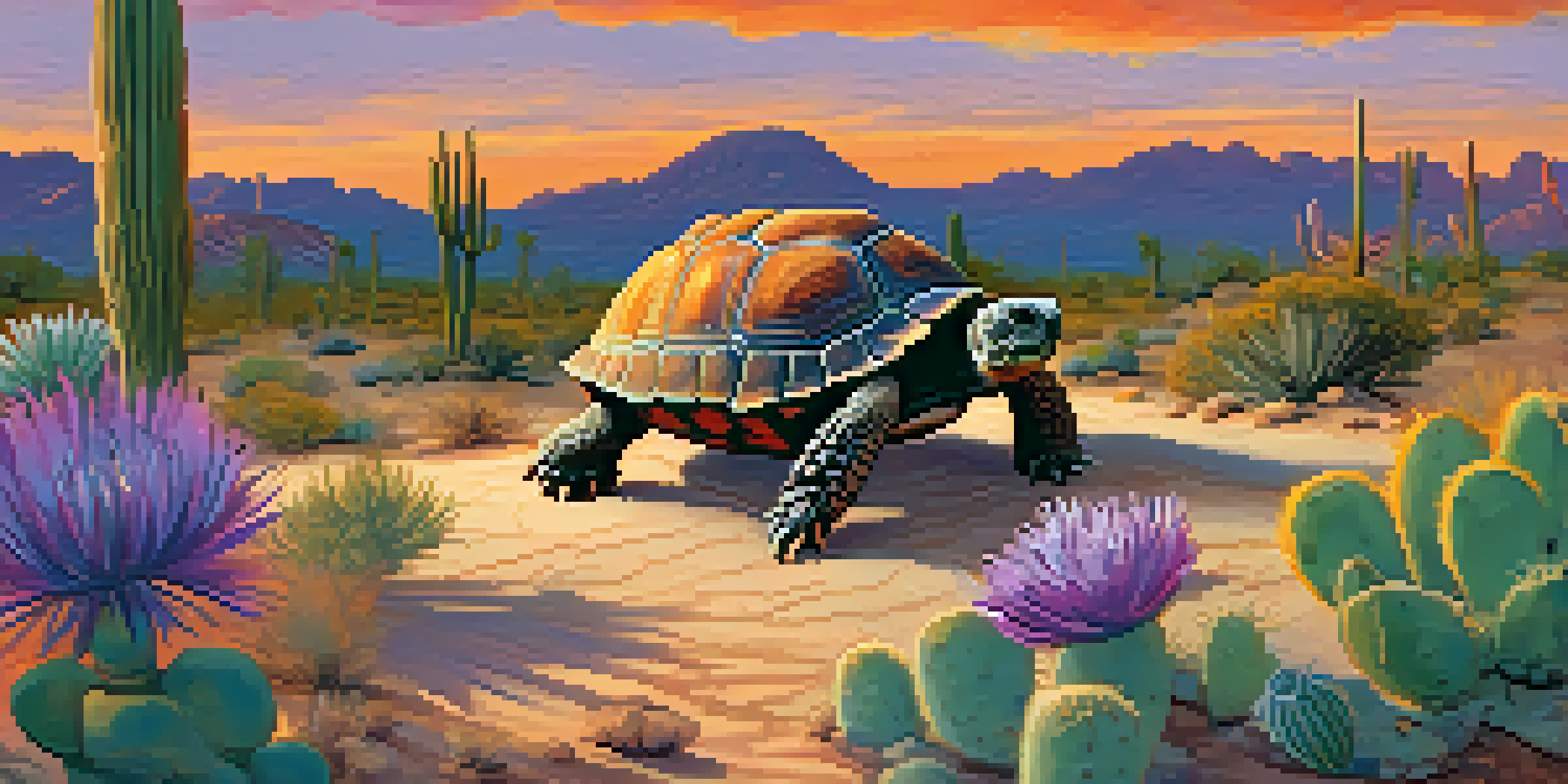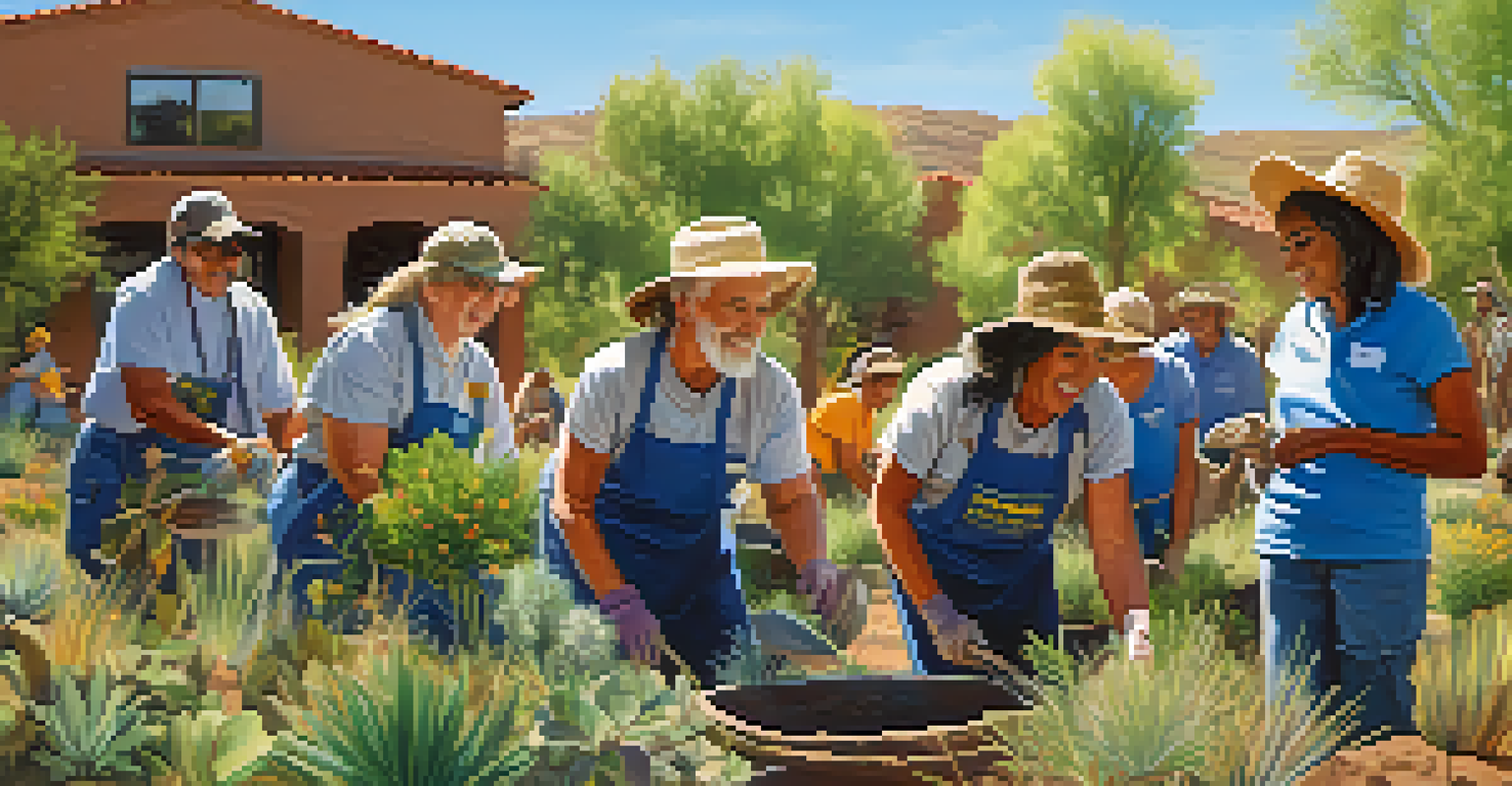Strategies for Preserving Arizona's Native Wildlife Habitats

Understanding the Importance of Native Wildlife Habitats
Arizona is home to a rich tapestry of wildlife, from the iconic desert tortoise to the elusive bobcat. These native habitats provide essential resources such as food, shelter, and breeding grounds for various species. Preserving these environments is crucial not only for animal survival but also for maintaining ecological balance.
The future will be shaped by how we manage our natural resources, and that includes protecting wildlife habitats.
Moreover, these habitats contribute to Arizona's natural beauty and attract tourism, which can bolster local economies. When we protect wildlife habitats, we also protect the cultural and historical significance tied to these landscapes. It's a win-win situation where both nature and communities thrive.
Ultimately, understanding the intrinsic value of these habitats lays the groundwork for effective conservation strategies. Awareness is the first step in fostering a collective responsibility towards protecting our natural heritage.
Community Engagement in Conservation Efforts
Engaging local communities is vital for the success of wildlife conservation efforts. When residents understand the importance of native wildlife, they are more likely to participate in preservation initiatives. Educational programs, workshops, and volunteer opportunities can inspire people to take action.

For instance, community-led clean-up events not only enhance habitats but also instill a sense of pride and ownership among participants. Collaborating with schools and organizations can further amplify these efforts, spreading awareness about local wildlife and conservation needs.
Importance of Wildlife Habitats
Native wildlife habitats are crucial for ecological balance, supporting both animal survival and local economies.
By fostering a sense of community around wildlife conservation, we create a network of advocates dedicated to preserving Arizona's rich biodiversity. This grassroots approach can lead to sustainable and impactful changes.
Implementing Sustainable Land Use Practices
Sustainable land use is key to preserving native wildlife habitats in Arizona. This approach encourages development that minimizes environmental impact while meeting the needs of growing populations. By incorporating green spaces and wildlife corridors into urban planning, we can create a harmonious balance between development and nature.
In every walk with nature one receives far more than he seeks.
For example, integrating native plants into landscaping not only enhances aesthetic appeal but also supports local wildlife. These plants provide food and shelter for various species, helping to maintain ecological integrity. Additionally, responsible agricultural practices can reduce habitat fragmentation and pollution.
Ultimately, adopting sustainable land use practices is essential for safeguarding wildlife habitats. It allows us to enjoy the benefits of development while ensuring that future generations inherit a thriving natural environment.
Restoration Projects for Degraded Habitats
Restoration projects play a crucial role in revitalizing degraded wildlife habitats. These initiatives focus on rehabilitating areas that have been damaged by human activities, such as mining or urban expansion. By restoring natural landscapes, we can help native species recover and flourish.
For instance, planting native vegetation in disturbed areas can restore the ecological balance and support local wildlife populations. Additionally, removing invasive species is vital, as they often outcompete native plants and disrupt local ecosystems. Every restoration project is a step towards rejuvenating our environment.
Community Engagement Drives Success
Involving local communities in conservation efforts fosters pride and ownership, leading to more effective preservation initiatives.
Together, these efforts can lead to significant improvements in habitat quality, ultimately benefiting both wildlife and the communities that rely on these ecosystems. Restoration is not just about fixing what's broken; it's about nurturing the future.
Legislation Supporting Wildlife Protection
Effective legislation is fundamental for the protection of Arizona's wildlife habitats. Laws and regulations can provide a framework for conservation efforts, ensuring that wildlife and their habitats receive the necessary protection. Policies that restrict habitat destruction and promote sustainable practices are essential for long-term success.
For example, the Endangered Species Act plays a vital role in safeguarding threatened species and their habitats. By enforcing protective measures, we can help prevent further declines in biodiversity. Advocacy and public support are crucial in ensuring that these laws are upheld and strengthened.
Ultimately, a strong legal framework empowers conservationists and communities alike to take action. By supporting wildlife protection legislation, we can help ensure that Arizona's natural heritage endures for generations to come.
Utilizing Technology for Wildlife Monitoring
Technology is revolutionizing wildlife conservation and habitat preservation. Tools such as remote sensing, GPS tracking, and camera traps enable researchers to monitor wildlife populations and their habitats more effectively. This data is invaluable for understanding the needs of different species and identifying threats to their survival.
For instance, researchers can track migratory patterns and habitat usage, which helps inform conservation strategies. Furthermore, technology can facilitate public engagement, allowing citizens to participate in wildlife monitoring through apps and citizen science projects. Everyone can contribute to the conservation cause, regardless of their expertise.
Sustainable Practices for Future
Implementing sustainable land use practices is essential for protecting native wildlife habitats while accommodating population growth.
By embracing technological advancements, we can enhance our understanding of wildlife dynamics and make informed decisions that benefit both species and habitats. It's an exciting time for conservation, as innovation opens up new possibilities.
Collaboration Between Organizations and Agencies
Collaboration among various organizations, agencies, and stakeholders is essential for effective wildlife conservation. By pooling resources and knowledge, these groups can create comprehensive strategies that address the multifaceted challenges facing wildlife habitats. Partnerships can lead to innovative solutions and enhance the overall impact of conservation efforts.
For example, local nonprofits often work alongside government agencies to implement conservation projects that benefit both wildlife and the community. These collaborations can also involve academic institutions, leveraging research to inform best practices and policies. When diverse entities unite, they can tackle issues more effectively.

Ultimately, collaboration fosters a sense of shared responsibility for our natural resources. By working together, we can ensure that Arizona's wildlife habitats are preserved for future generations to enjoy.
Encouraging Eco-Tourism as a Conservation Tool
Eco-tourism presents a unique opportunity to support wildlife conservation while promoting local economies. By attracting visitors who are interested in nature and wildlife, communities can generate revenue that directly benefits conservation efforts. This approach emphasizes responsible travel that respects and preserves natural habitats.
For example, guided tours that educate visitors about local wildlife can raise awareness and generate funds for conservation projects. Additionally, eco-lodges can implement sustainable practices that minimize their environmental footprint while providing a unique experience for travelers. Everyone wins when tourism supports conservation.
Encouraging eco-tourism not only helps fund conservation initiatives but also fosters a deeper appreciation for Arizona's natural beauty. By connecting people to nature, we can inspire future generations to protect and cherish these habitats.